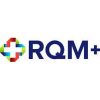On multiple occasions, Dr. D has voiced his concerns over warning letters the reference double digit Form 483 observations. When an establishment is awarded a warning letter for racking up 10 or more of the infamous “failure to establish” comments, they truly deserve the prized agency warning letter.
Seriously people, as medical device industry professionals, it is our job to ensure the products that our organizations design, develop, manufacture, and enter into commerce are safe and effective in their intended use. It is also our job to protect our organization’s Chief Jailable Officers (CJOs) from an all-expenses paid trip to one of the very well-appointed federal penitentiaries scattered around the United States. Additionally, it is Dr. D’s humble opinion, all device establishments, will be on the receiving end of a Form 483 observation at some point in time (Murphy is alive and lurking people). Generally, they are not a big deal and can be quickly remediated through a proactive approach to corrective action.
However, it is the doctor’s humble opinion, 10 Form 483 observations is down-right unacceptable. Clearly, the management team is asleep at proverbial wheel. Even worse, the CJO and the quality and regulatory staff just might be grossly incompetent or even worse, not appropriately trained to work in this industry. Could such incompetence borderline on criminal intent? It’s not this doctor’s call to decide. Dr. D does not make the rules, he just helps organizations learn to understand and play by the rules.
As you read this week’s guidance remember, FDA is not attempting to employ regulatory “legerdemain” (look-it-up) to trick device establishments into receiving Form 483 observations for compliance issues. In fact, the FDA is looking for one very simple behavior in all device establishments, simply comply with the QSR and associated federal regulations.
Warning letter – 17 December 2014
As you readers are already aware, the subject of this week’s Devine Guidance received a tersely-worded warning letter for their failure to comply with multiple regulatory requirements. As mentioned in this week’s introduction, this poster child for non-compliance was awarded 10 Form 483 observations for their stellar performance. Although the violations noted were spread across the entire quality spectrum, Dr. D found one particular observation appalling from a Quality Management System (QMS) standpoint, the failure to establish a quality policy and associated objectives.
Warning Letter Excerpt
Observation Six (6) – “Failure of management with executive responsibility to establish its policy and objectives for, and commitment to, quality, as required by 21 CFR 820.20(a). For example, when asked by the investigator, you replied that your firm has not defined, documented, and implemented a quality policy and quality objectives. During the course of the inspection, you provided Padtest Quality Policy, dated 9/18/14 to our investigator.”
“Your firm’s October 16, 2014 response references this same document. Your corrective actions are not adequate, as we cannot verify this policy has been implemented.”
Subpart B – Quality System Requirements
Section 820.20 Management Responsibility
a) Quality policy. Management with executive responsibility shall establish its policy and objectives for, and commitment to, quality. Management with executive responsibility shall ensure that the quality policy is understood, implemented, and maintained at all levels of the organization.”
Compliance for Dummies
People, establishing a quality policy and quality objectives are considered Quality 101 types of activities. In fact, ISO 9001 (Clause 4.2.1(a)) clearly states the need for documented statements of a quality policy and quality objectives. Simply stated, any organization (device manufacturer or not) needs to establish a quality policy and quality objectives. This is especially true for the manufacturers of finished medical devices as ISO 13485:2003 (Clause 4.1.2(a)) is identical to the ISO 9001 requirement. In fact, the FDA’s QSR and ISO are completely in alignment when it comes to having an established quality policy and quality objectives.
Additionally, the creation of a quality policy statement does not require the skills of a Noble Prize Laureate. Many years ago, the Ford Motor Company established one of the most basic yet pure quality policies of all time; “Quality is Job One!” If your establishment is unsure of the construction and content of a quality policy; look at your competition. At the end of the day, the quality policy has to be relevant and meaningful to the organization. So mentioning that your establishment’s finished devices support the improvement of patient outcomes is probably a good thing. However, regardless of the wording, all device establishments are required to have a written quality policy.
Furthermore, employees actually have to be trained to the quality policy and the training documented. Good ISO auditors and FDA investigators will ask about the policy during employee interviews and although word-for-word regurgitation is not required, they will expect employees to understand the meaning of the quality policy.
Quality objectives that can be tracked through the collection and analysis of meaningful metrics must be established. In fact, these objectives should be linked to the management review process. Dr. D strongly believes that the performance incentives for all members of a device establishment should be linked to the quality objectives. Some of the meaningful metrics that the doctor routinely sees organizations collecting are:
- Metrics relating to the performance of the CAPA System;
- Market withdraws and corrections;
- Medical device Reports (MDRs);
- Training;
- Product complaints;
- Production yields (scrap); and
- Supplier performance (on-time delivery and acceptance rates at incoming inspection).
The beauty of quality objectives, the device establishment can select objectives that are truly relevant to their organization. One parting comment from Dr. D, management with executive responsibility should post the quality objectives and the performance against the objectives throughout the facility; so every-single member of the organizations understands the quality objectives. Why? Because if team members do not know what the objectives are, how in the heck is the organization going to achieve the stated objectives?
Takeaways
For this week’s guidance, Dr. D will leave the readers with just one takeaway. Establishing a quality policy and quality objectives is considered a Quality 101 type of activity. An organization could be making toys in China, assembling computers in Thailand, manufacturing running shoes in Vietnam, or assembling finished medical devices in Scottsdale, AZ. However, if the establishment is ISO 9001 or ISO 13485 accredited or claiming to be in compliance with 21 CFR, Part 820, then they better have a posted quality policy and meaningful quality objectives. Please do not be that organization that fails to comply with the FDA’s QSR and winds up on the receiving end of an agency warning letter.
In closing, thank you again for joining Dr. D and I hope you find value in the guidance provided. Until the next installment of DG – cheers from Dr. D. and best wishes for continued professional success.
References
- Code of Federal Regulation. (2014, April) Title 21 Part 820: Quality system regulation. Washington, D.C.: U.S. Government Printing Office.
- Devine, C. (2011). Devine guidance for complying with the FDA’s quality system regulation – 21 CFR, Part 820. Charleston, SC: Amazon.
- Devine, C. (2013). Devine guidance for managing key attributes of a FDA-compliant quality management system – 21 CFR, Part 820 Compliance. Charleston, SC: Amazon.
- FDA’s enforcement page. (2014, December). FDA.gov Website. Retrieved January 31, 2015, from http://www.fda.gov/ICECI/EnforcementActions/WarningLetters/ucm429201.htm.







